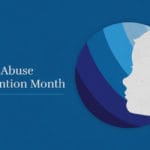Catholic Church Fails Minority Victims Of Priest Abuse
Many minority survivors of priest abuse may never report their experiences, and the Catholic Church has done little to empower these victims.
Issues of racial injustice are at the forefront of national conversations. People are increasingly examining how race affects all areas of one’s life.
In January 2020, The Associated Press highlighted an often overlooked area of racial injustice. The news outlet examined how clergy sexual abuse has affected Black, Indigenous and People of Color (BIPOC).
As the Catholic Church reckons with its sexually abusive past, people are examining how race affected who was victimized and how the church dealt with its abusers. Additionally, advocates question if the church is doing enough to support minority survivors.
The Associated Press article came to two main conclusions:
- Some abusive Catholic priests targeted racial minorities.
- The Catholic Church has not done enough to reach out to minority victims of clergy abuse.
Abusive Clergy Members Target Racial Minorities
Sexual abusers share one main trait: they prey on the vulnerable.
Most abusers in the Catholic Church preyed on children, an already vulnerable population. Many of these abusive priests went a step further and targeted the most vulnerable children. They preyed on children in poverty or social isolation. They provided lifelines to families in need and then exploited the children they were supposed to support. Often, they targeted racial minorities.
Abuse of BIPOC affected children across the nation. In Montana, priests abused Native American children on reservations. In Chicago, priests abused children in low-income Black families. In California, priests abused the children of Hispanic immigrants.
These priests exploited their white privilege and their position in the Church to take advantage of their victims. The Catholic Church also understood and abused this power imbalance.
The Church Perpetuated The Abuse Of Minorities
Historically, the Catholic Church went to great lengths to avoid public scandal. In cases of priest abuse, Catholic dioceses rarely reported abuse allegations. Many officials acted to hide the abuse and thus put more children in danger.
For example, Church leaders often transferred abusive priests to new dioceses or parishes. This is a practice commonly referred to as “priest shuffling.” As this practice grew in popularity, some parishes became dumping grounds for abusive clergy members.
Oftentimes, these parishes were located in minority or immigrant communities. The church assumed people in these communities would be less likely to report the abuse.
For example, internal documents from the Catholic Archdiocese of Los Angeles showed the dioceses placed abusive priests in parishes that supported undocumented people. Church officials thought parishioners in these communities wouldn’t speak up for fear of interacting with law enforcement.
“They [victims in economically disadvantaged communities of color] are less likely to know where to get help, less likely to have money for a lawyer to pursue that help and they are more vulnerable to counterattacks.”
The Church Falls Short For Minority Abuse Victims
In 2002, The Boston Globe published a series of articles exposing clergy abuse in the Boston dioceses. Following the expose, Catholic dioceses across the country were embroiled in scandals, investigations and lawsuits.
Some Catholic dioceses took steps to investigate clergy abuse in their own parishes. Many published lists of accused clergy members and opened new reporting avenues for survivors.
Despite these positive efforts, it is nearly impossible to estimate the true extent of sexual abuse in the Catholic Church. Many survivors, especially BIPOC, may never come forward with their accounts of abuse.
Additionally, the Catholic Church has done little to track demographic data of survivors or encourage minority survivors to come forward. Without significant efforts on the part of the Church, many minority survivors will remain silent, each for their own reasons.
Some lawyers and victim advocates have attempted to reach minority communities. But, many believe it should be the Church’s responsibility.
“The church has to come into the shadows, into the trenches to find the people who were victimized, especially the people of color. There are other people like me and my family, who won’t come forward unless someone comes to them.”
Sources
- 1
Fields, G., Linderman, J., Maye-E, W. (2020, January 4). Church offers little outreach to minority victims of priests. The Associated Press.
- 2
(2018, November 8). Immigrant Communities Were The ‘Geographic Solution’ To Predator Priests. NPR.



